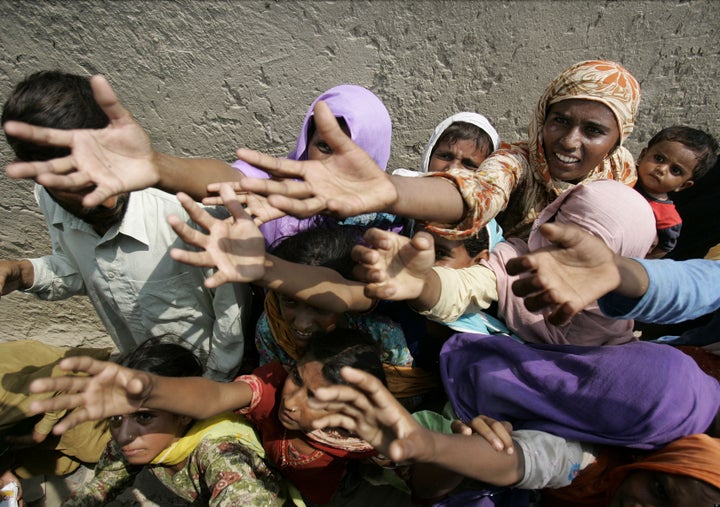
Strangely enough, the one thing that most people know about giving to nonprofits is wrong. Most people believe that the percentage one nonprofit spends on administration costs is an indication of how effective they are.
Unfortunately, this percentage is often more a result of accounting practices than of the efficiency of the nonprofit. To understand how this works, take the recent controversy over the 100,000 misprinted shirts the NFL donated to World Vision.
In their press release, World Vision states that the 100,000 pieces of donated clothing are valued at $2,000,000. This means each item is worth approximately $20. I don't know how they determined this amount because the shirts are misprinted and contracts with the NFL prevent them from being sold in the U.S., but that's the number they agreed upon. Each shirt is considered a "program cost" when it's given to someone. The cost of getting that shirt to the person is considered an "administrative" cost.
So how much is the "administrative" cost? In World Vision's fundraising appeal they ask for donations to pay for the cost to ship clothes, shoes and medicine. They claim "your gift carries the impact of 11 times its face value." So they're estimating that the cost of shipping goods averages out to be a 1 to 11 ratio of transport (admin costs) to shirt (program costs).
Going with that average (and knowing that it would vary some depending on what's being shipped), the cost of shipping a shirt is $20/11 or $1.82 per shirt. Assuming these figures are correct, this is how you would determine the percent spent on administration. World Vision spends $1.82 (admin) to ship a $20 shirt (program). So total amount is $20 + $1.82 or $21.82. Next, to determine the percentage spent on administration, divide the admin cost by the total cost, so $1.82/$21.82 or just 8.3 percent. Using these numbers, the NFL shirt donation appears to be a very "cost efficient" program.
But this $20 is just an imaginary number because this is a shirt, not a $20 bill. The only monetary value it has is what someone is willing to pay for it. So what is the actual value of the shirts? It depends.
According to AERDO Interagency Gifts-In-Kind Standards, the company must be able to sell the goods independently for the same amount they're claiming if the goods were sold on the day of the donation.
"3.5 Fair Value: GIK donations are to be valued based upon "the price that would have been received to sell an asset or paid to transfer a liability in an orderly transaction between market participants" as of the date of the donation (FASB ASC 820-10-35-2). This is known as an entity's 'exit price.' This assumes the transaction would be an 'arms-length' transaction."
So can 100,000 shirts of the losing team be sold at $20 each after the Super Bowl, probably not. But even if it was possible to sell that many shirts for $20 each in the U.S., they're not allowed to. According to a 2007 New York Times article:
"The other set of championship gear -- the 288 T-shirts and caps made for the team that did not win -- will be hidden behind a locked door at Dolphin Stadium. By order of the National Football League, those items are never to appear on television or on eBay. They are never even to be seen on American soil."
So the fair market value, on the date of donation, in the U.S. could be thought of as essentially $0, unless the NFL is willing to change their contracts and licensing agreements.
The next question then is what is the value of the shirts in the countries where they will be distributed? Let's say the shirts could be sold on the local market for somewhere between $1 and $10.
If the fair market value of the shirts is $1, then the amount per shirt is $1 (program) + $1.82 (admin) = $2.82. The admin ratio would come out at $1.82/$2.82 or 64.5 percent. This exact same shirt distribution would now appear to be a horribly inefficient program. In fact, World Vision would pay $0.82 more per shirt ($82,000 total) to import the clothes than to purchase shirts in the local market place. It's actually not all that uncommon for organizations to pay more to import donated goods than it would have cost them to purchase the goods locally.
Now let's imagine that similar shirts sell in the market place for $10 instead. The amount per shirt would be $10 (program) + $1.82 (admin) = $11.82. The admin ratio would come out at $1.82/$11.82 or 15.4 percent. Now the shirt distribution appears to have an average cost efficiency.
So, depending solely upon the illusive "fair market value," the exact same program can appear to be very cost efficient (8.3 percent), horribly inefficient (64.5 percent), or about average (15.4 percent).
To show just how illusive "fair market value" can be, here's a section from World Vision's Chief Financial Officer's Financial Assessment of 2010:
"A change in valuation methodology for pharmaceutical products donated to World Vision lowered revenue for the year by about $140 million. This change reflects new accounting rules clarifying how to determine fair market value for donated goods, and applies to all U.S. organizations receiving gifts-in-kind. Certain donated pharmaceuticals, which World Vision had previously valued by reference to U.S. wholesale prices, are now being referenced to wholesale prices in countries representing principal markets for those products (which tend to be lower than U.S. prices)."
Simply by revaluing their donated medicine based on the local market rather than the U.S. market, World Vision lost an imaginary $140 million.
The administration ratio is a fairly meaningless number. Too often it is based on accounting practices rather than how efficient the nonprofit actually is.